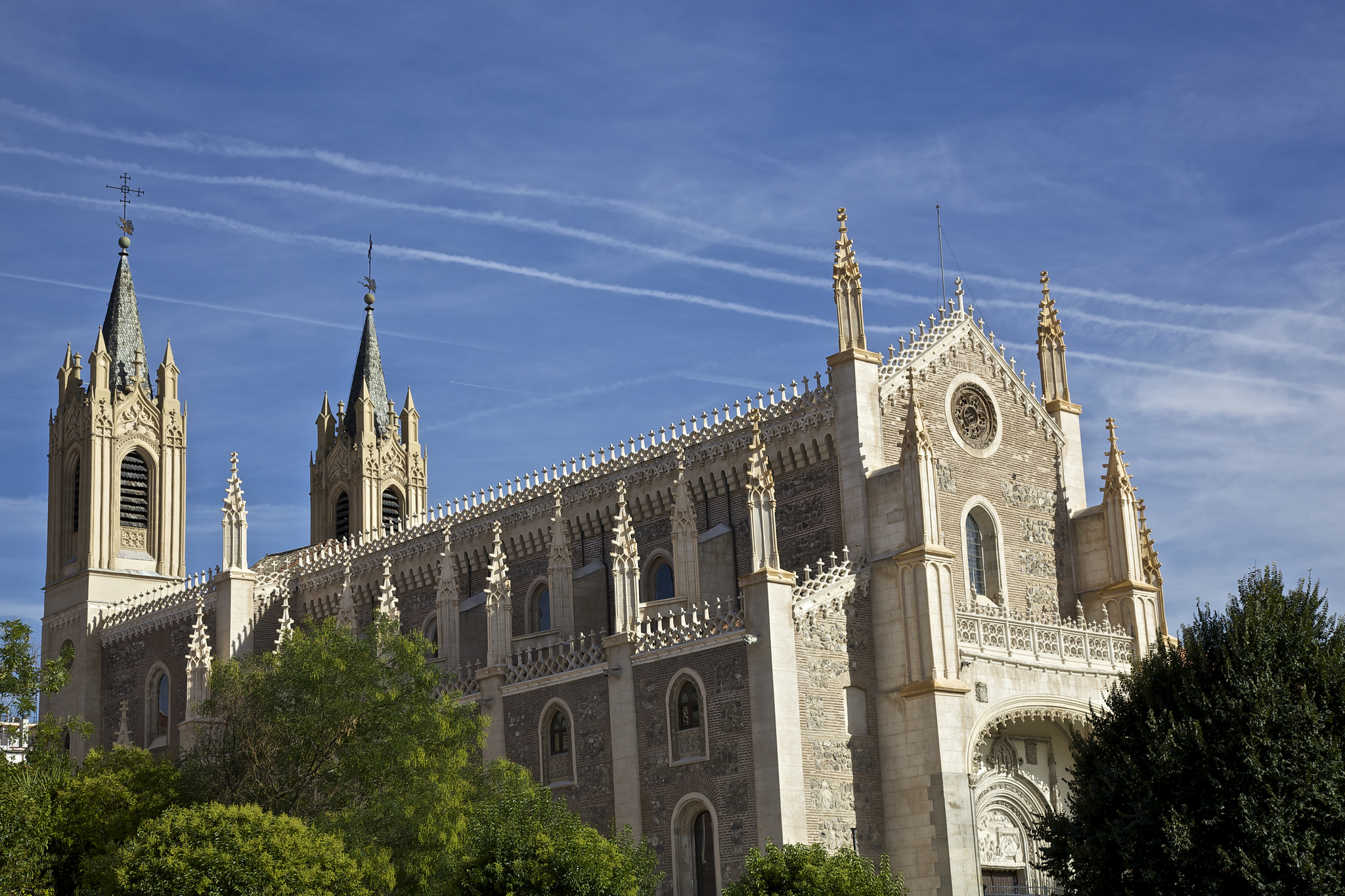Traveling to Madrid, Spain in the near future? Have an interest in history, architecture and/or world religions? If so, one of the buildings you should really consider visiting is the Iglesia San Jerónimo el Real. From its undeniable historical significance to the manner in which the church was constructed so many centuries ago, the Iglesia San Jerónimo el Real provides tourists with a captivating look back at Old World Madrid and demonstrates, through its construction, the essential role the church must have played in the lives of Madrileños through the centuries. As a bonus, the structure is also an absolute treat for the eyes. To help you become a bit more familiar with the Iglesia San Jerónimo el Real, below we have compiled a few interesting facts, including some information regarding its history and a description of some of the architecture, both inside and outside the church. Iglesia San Jerónimo el Real, photo credit
Known by locals as the “Jeronimos,” the Iglesia San Jerónimo el Real is one of the most historic churches in the capital. The church is the remaining structure of the Hieronymite monastery that once stood very near the Buen Retiro Palace, of which a portion now serves as the Prado Museum. Its proximity to the Royal Palace underscores its connection to Spain’s ruling families, serving, among other things, as the church used for the investiture of the Prince of Asturias and King Phillip II.
The Hieronymus monastery was originally built during the reign of Henry IV of Castile near the El Pardo Palace. However, due in large part to the marshy makeup of the land at that location, the monastery was moved during the reign of Queen Isabella I to its current position. An interesting fact regarding the church is that in 1561, after King Phillip had moved the Spanish court to the Palacio del Buen Retiro, he established a royal bedroom near what is now the Iglesia San Jerónimo el Real so he could hear the morning masses.
The Palacio del Buen Retiro was almost completely destroyed during the Napoleonic occupation, and because French troops were quartered in the monastery, not only were the monks expelled from the structure, the church itself was also left in ruins.
Since that time, the Iglesia San Jerónimo el Real has undergone many reconstructions and renovations. Originally built between the years of 1503 and 1505, the church had its first major restoration during the reign of Isabella II between 1848 and 1849. The designer for this restoration was Narciso Pascual Colomer, who, like the original designer Enrique Egas, employed an Isabelline Gothic style of architecture while adding new features to the church such as spires and towers. Following its second restoration in the years 1879-1883, in which Enrique Maria Repulles created the building as a parish church, only a few of the original exterior features remained. Even later in the 19th century, under the watch of architect Pontian Ponzano, the entire exterior of the church was remodeled in a neo-Gothic style, a renovation that remains controversial to this day.
One of the most beautiful and historically significant features of the church is the exterior stairway that faces the street. This was constructed in 1906 for the wedding of King Alfonso XIII with the goal of providing a more impressive access point to the church. The Baroque cloister, designed by Fray Lorenzo de San Nicolas, is another stunning feature. For years it remained in disrepair, but in 2007, after an agreement was reached between the church and the government, the needed land to improve and repair the cloister was finally appropriated by the Prado Museum. The inner courtyard facade of the Iglesia San Jerónimo el Real, which was rebuilt into a cubic room designed by Rafael Moneo, greatly expanded the church. This wing is now labeled Cubo de Moneo (Moneo’s Cube) by many locals—a derisive term used by those who opposed many of the newer renovations.
On the stunning interior of the Iglesia San Jerónimo el Real tourists will find a number of beautiful sculptures by Benlliure, as well as Juan Pascual de Mena’s 18th century work Cristo de la Buena Muerte and paintings by Vicenzo Carducci and Jose Mendez. These are in addition to the other breathtaking inner features, including neo-Gothic lamps and carvings and perhaps the most pristine stained glass windows in the country.



